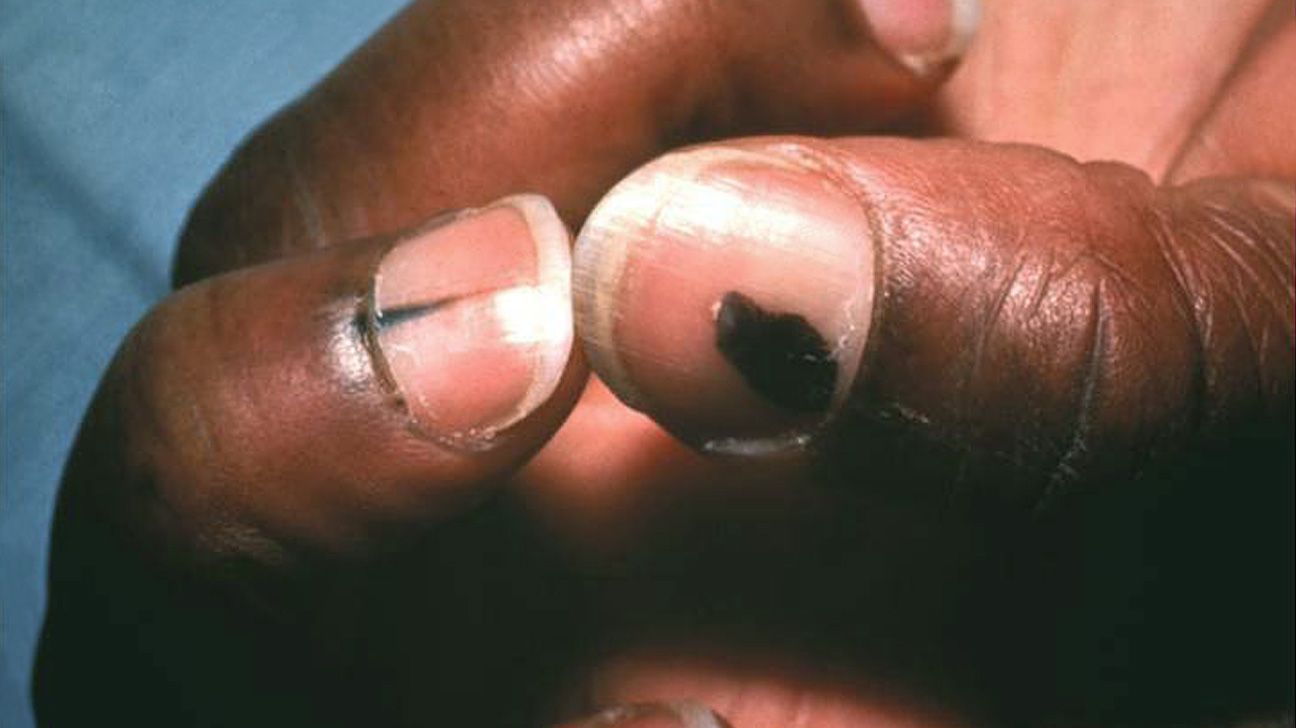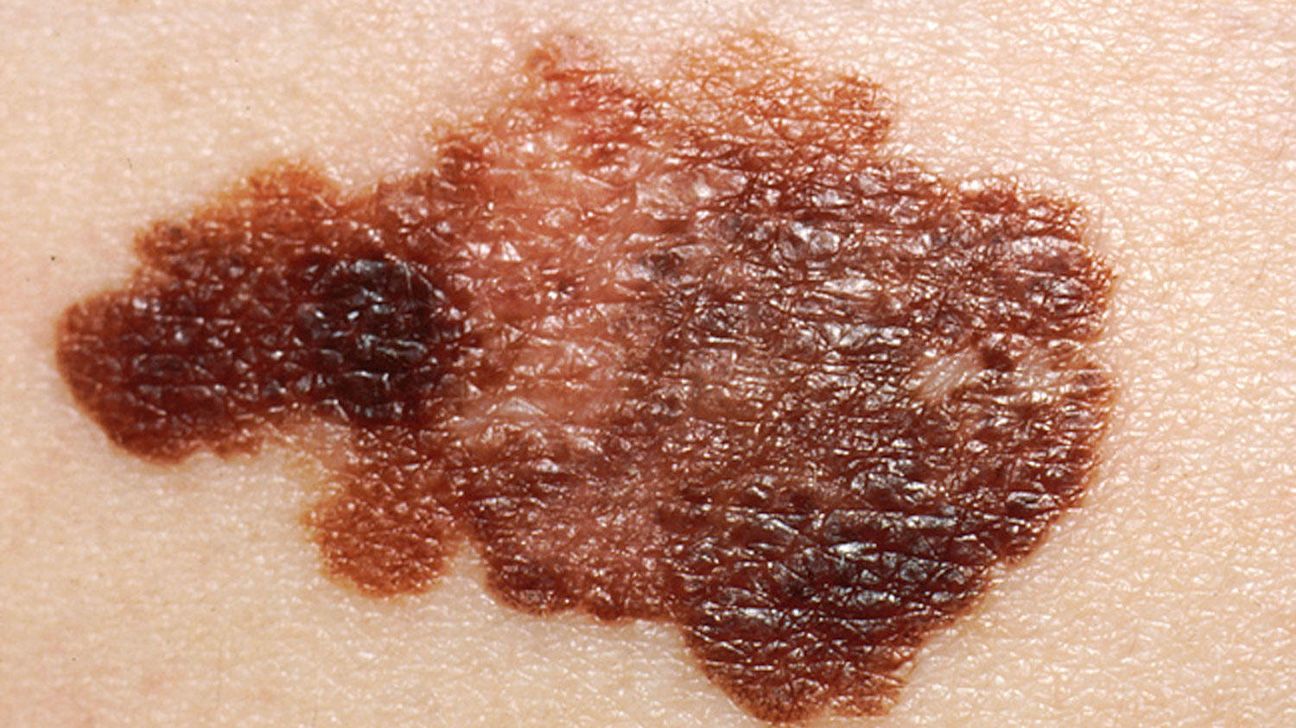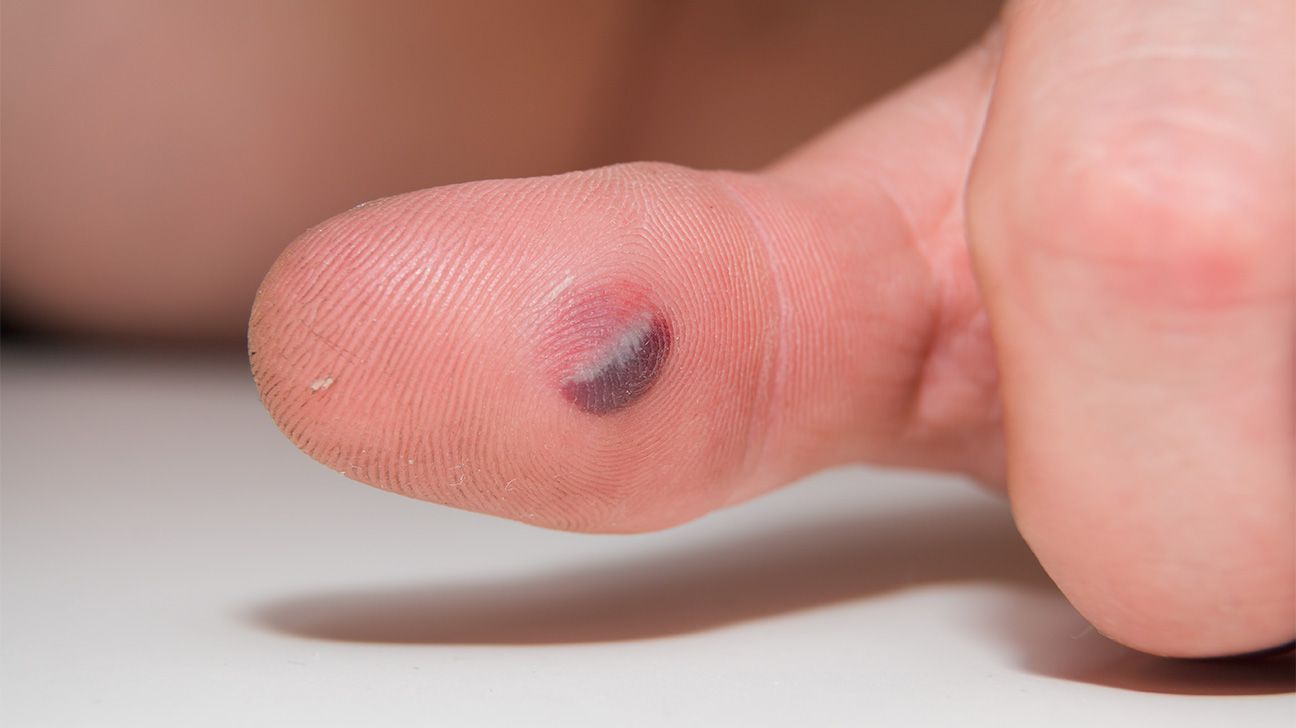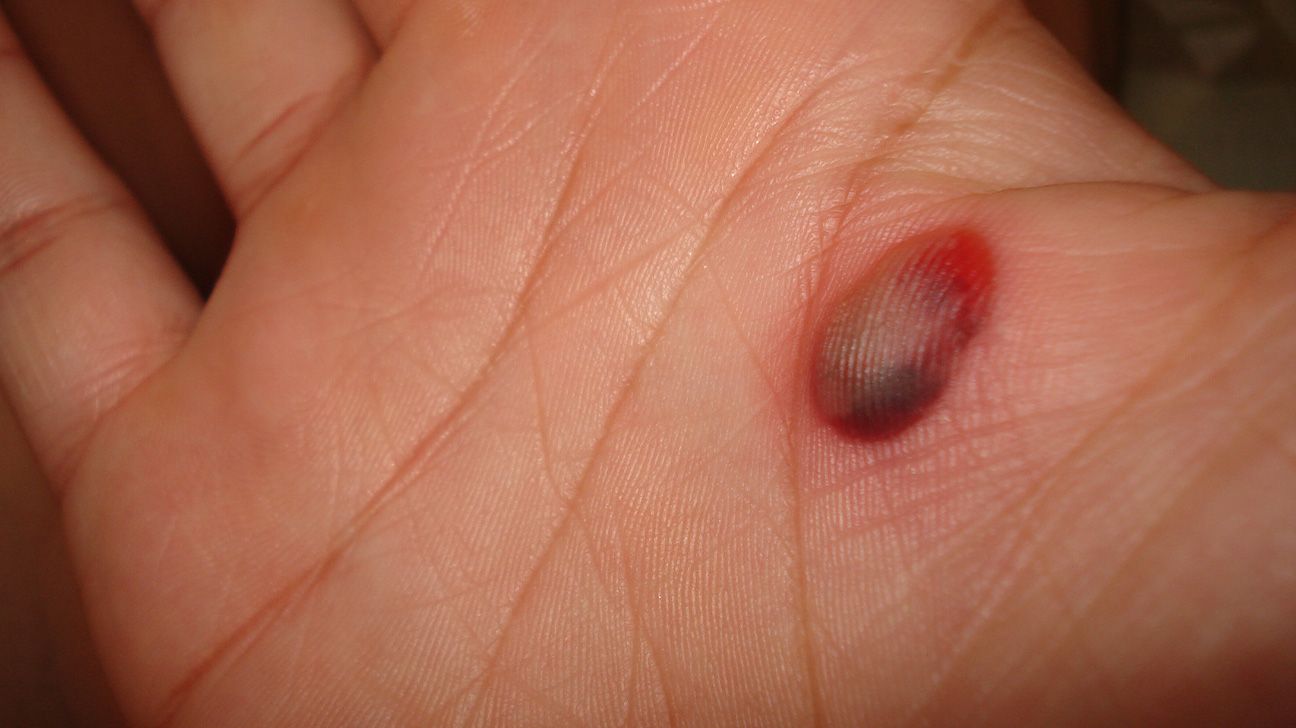Melanoma is a form of skin cancer, and a blood blister is a blood-filled pocket of skin. Although they can look similar, they are different conditions that require different treatments.
Melanomas form from skin cells called melanocytes. Melanocytes make a pigment called melanin, which gives skin a brown or tan color.
Blood blisters occur due to injury. They are similar to friction blisters, except they fill with blood rather than clear fluid.
Blood blisters may be red, black, or purple. Certain forms of melanoma can have a similar appearance to blood blisters. However, blood blisters are usually harmless, whereas melanomas may be dangerous if left untreated.
Read on to learn more about the difference between melanoma and blood blisters, including their symptoms, causes, and treatments.
The following slideshow shows images of melanomas and blood blisters.





Melanoma can cause skin changes that may resemble blood blisters. However, they are different.
Melanoma
Melanoma may develop on a person’s skin in several different ways. They may appear as:
- a cyst
- a bruise
- a firm dome-shaped growth that may bleed
- a changing mole
- a new mole, freckle, or age spot that does not look like other skin marks
- a slow-growing patch of thick skin that looks like a scar
- a dark vertical line under a person’s fingernail or toenail
- a band of darker skin around a person’s fingernail or toenail
- a dark spot on the palm, bottom of the foot, or under or around the nail in people of African descent
A person may use the ABCDEs of melanoma to help identify potential melanomas. The ABCDEs of melanoma are as follows:
- A for asymmetry: A melanoma may look different on one side than the other.
- B for border: A melanoma may have a border that is scalloped, irregular, or not well-defined.
- C for color: Melanomas may be different colors in different areas. They may be brown, black, tan, red, white, or blue.
- D for diameter: Melanomas are generally greater than 6 millimeters (mm) in diameter at the time of diagnosis. However, they may be smaller.
- E for evolving: A melanoma may change size, shape, or color over time.
Additionally, a melanoma may be itchy, painful, or bleeding.
Learn more about melanoma symptoms.
Blood blister
Blood blisters are blood-filled pockets of skin. They may form a raised bump on a person’s skin. They may be red, purple, or black.
A blood blister may vary in size depending on a person’s injury.
A form of melanoma, known as nodular melanoma, may look similar to a blood blister. The
A person should contact a doctor if they develop a bump that looks like a blood blister but does not heal after 2 weeks.
Melanoma and blood blisters have different causes.
Melanomas
Cancers occur due to gene mutations within a person’s cells. These mutations cause the cells to multiply uncontrollably.
In
UV rays are a major cause of melanoma. A person may be exposed to natural UV rays from the sun, as well as through artificial sources such as tanning beds.
Occasionally, a person may also inherit certain genetic mutations from their parents that increase their risk of melanoma.
Blood blisters
Blood blisters occur when blood vessels rupture under the skin, but the skin does not break open.
Injuries that involve crushing or pinching of the skin may cause a person to develop blood blisters. These may include:
- using an object that repeatedly rubs the skin, such as a tool
- wearing footwear that does not fit properly
- having extra friction in shoes due to sweaty feet
- pinching the skin between two objects
- developing severe frostbite
Diagnosis for melanoma and blood blisters can differ.
Melanoma
A person may need to contact a dermatologist for a melanoma diagnosis.
A dermatologist may ask a person about their symptoms and family history of melanoma. They will also examine the skin.
A dermatologist may take a sample from the skin growth. This is called a skin biopsy. They then send this sample to a laboratory, where a technician will examine it for cancer cells.
Blood blisters
A person may not need to visit a doctor for a blood blister. They may wish to consult a pharmacist about ways to protect the blister and encourage healing.
If the blister does not resolve with home remedies within 2 weeks, it is best to contact a doctor for advice. The doctor may order tests or refer the person to a dermatologist.
While a person requires medical treatment for melanoma, they can usually manage blood blisters with home remedies.
Melanomas
Treatment for melanoma can depend on factors such as:
- the type of melanoma
- how deeply it has grown into their skin
- whether the cancer has spread
- the overall health of the individual
Possible treatments for melanoma include:
- surgery to remove the growth
- surgery to remove lymph nodes if the cancer has spread
- immunotherapy, which uses a person’s immune system to destroy cancer cells
- targeted therapy, which uses drugs to target cancer cells
- chemotherapy, which uses medication to kill cancer cells
- radiation therapy, which uses radiation to kill cancer cells or stop new cells from developing
If a person receives a melanoma diagnosis, their doctor can provide more information about the treatments they recommend.
Learn more about medications for melanoma.
Blood blisters
Most blood blisters heal by themselves within 2 weeks. A person may help it heal by:
- loosely covering the blister with a plaster
- using a padded dressing to protect the blister
- avoiding popping or draining the blister
- keeping the area clean and covered
- avoiding rigorous activity until the blister heals
Melanoma is a form of skin cancer that can cause growths on the skin. Blood blisters occur due to injury to the skin. Both conditions may look similar, but they require different treatments.
If a person has a skin growth that looks like a blood blister, they should contact a doctor if it has not healed after 2 weeks. The doctor may refer the individual to a dermatologist, who may use tests to confirm the diagnosis and advise on suitable treatments.


